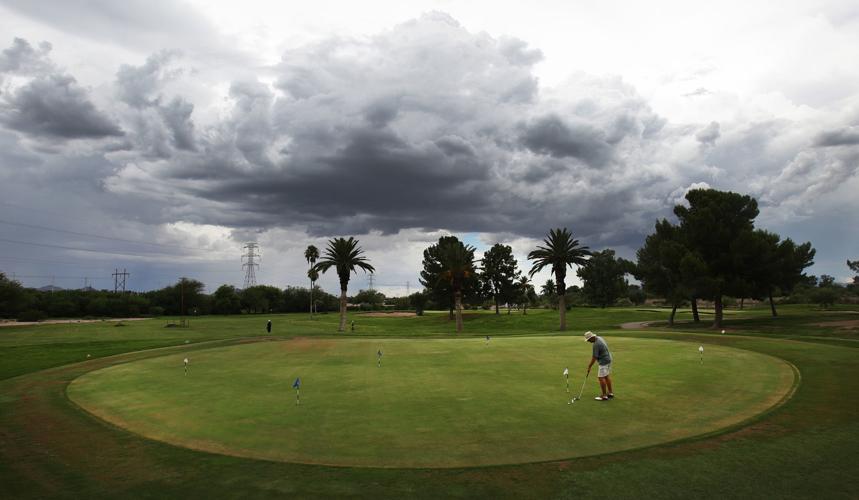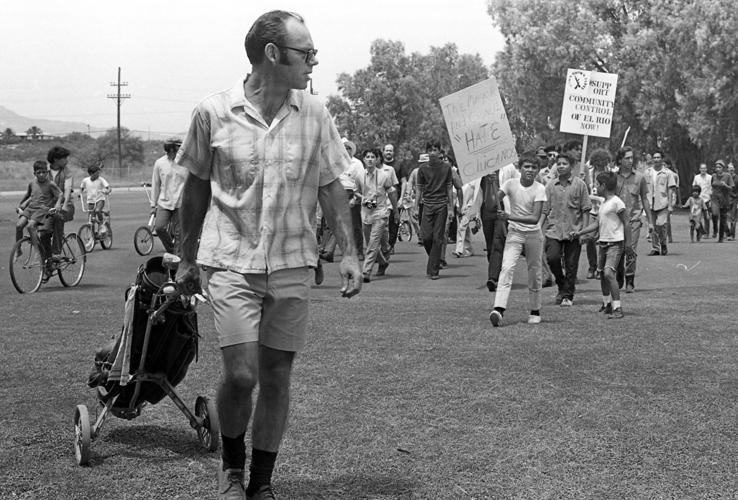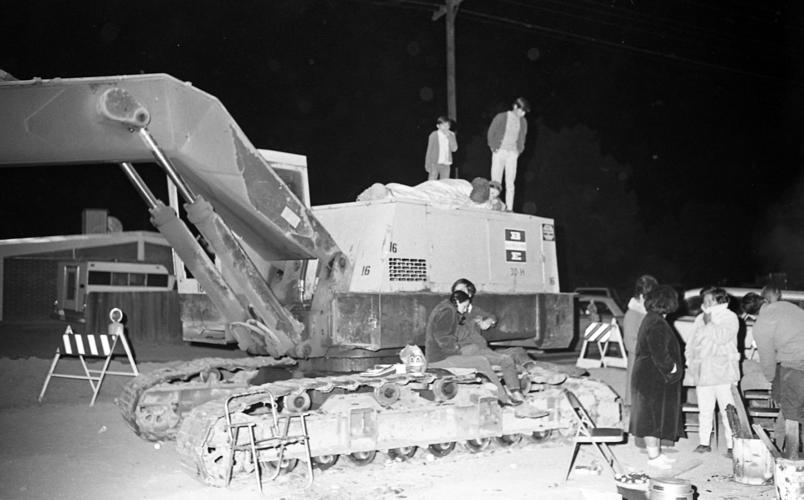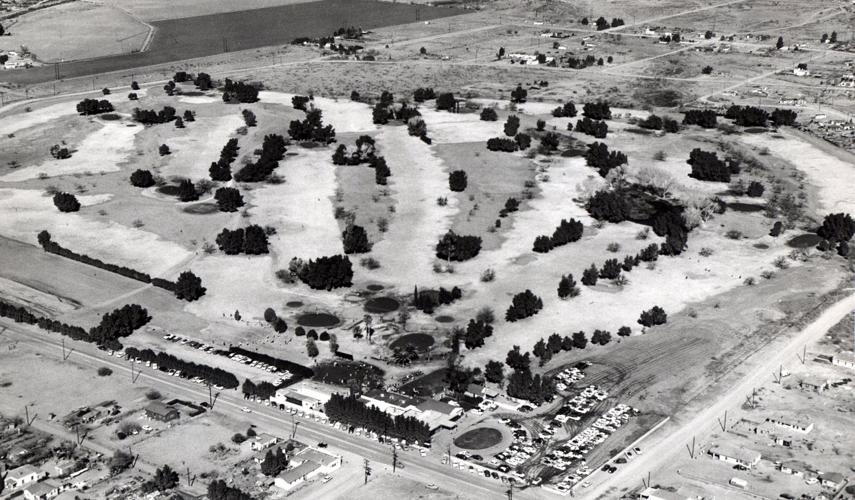For years, there has been a pointed debate about what to do with the city-owned golf courses.
Their mere existence has drawn the ire of environmentalists, who object to the large amount of treated effluent it takes to irrigate the lush green landscapes in the middle of the Sonoran Desert. Others are against the city spending hundreds of thousands of dollars on the five courses every year in a region with 40 golf courses and declining participation.
This week, the Tucson City Council will begin the process of taking public input on other possible uses for Silverbell, El Rio and Fred Enke golf courses as well as the two 18-hole Randolph golf courses next to Reid Park.
The ideas range from redevelopment, including business and residential, to creating other recreational uses for the courses, with the closure of at least one or more of the courses possible for the plans to move forward.
A total departure from the golf business, however, is unlikely for the city.
That’s because, in 1925, the city put a restriction in place that the land at Randolph Park is “forever dedicated as and for a municipal golf course and public park” making a decision for the city to completely hang up its clubs highly improbable. Also, the two courses are popular and make money — unlike the other courses.
The other three city-owned courses also have some challenges when thinking of redevelopment plans, including restrictions on the properties tied to the federal funding that helped build the Fred Enke and Silverbell courses.
But the city appears more likely to eventually make changes at those two courses and El Rio — with the Silverbell property, 3600 N. Silverbell Road, the most likely to undergo a dramatic change the soonest.
“The face of golf
is changing”
City Manager Mike Ortega outlined in a 10-page memo to council members Friday that the city has worked to reduce operational expenses and increase revenues by handing off the day-to-day golf operations to a private management company.
“We know the face of golf is changing and rather than reacting to what appears to be part of the national trend of a reduction of rounds of golf played, I would like to look at this as an opportunity to chart a path forward,” he said.
The competition for golfers with nine private, six semiprivate, 15 public, nine resorts and one course on Davis-Monthan Air Force Base suggests there are more courses than the community needs.
The National Recreation and Parks Association suggests that nationally there should be 18 holes for every 50,000 people. The math suggests the Tucson metro region needs 22, not 40 courses.
“The golf-course building boom of the late 1980s and early 1990s has resulted in what appears to be an oversaturation of the golf market,” Ortega told the council.
Even shutting down one course, he argues, doesn’t mean that players won’t use another city-run course.
“The city’s five courses are competing against each other for market share,” Ortega wrote.
The series of public meetings scheduled for this month is the starting point of a larger community discussion, with the council expected to consider options in the coming months.
Without making changes to the city’s long-term plans for the courses, the city won’t have the $25 million it needs over the next 15 years for deferred capital maintenance issues at the courses.
“It is likely that golf in the current format will continue to operate with a thin financial margin and make minimum repairs to keep the courses open. Funding will not be available to make significant repairs and improvements to keep the courses a quality experience,” Ortega said.
Council divided
Vice Mayor Regina Romero, along with Councilwoman Karin Uhlich, asked for the community meetings on the future of the city’s courses.
The future of those courses — specifically El Rio Golf Course in Romero’s ward — created a political firestorm in May 2013 when the council discussed an incentive deal for Grand Canyon University. The deal, which never came to a preliminary hearing or a vote by the council, would have redeveloped the west-side 18-hole course into a campus for the for-profit Christian university.
Romero says she has been pushing for changes with how the city uses the facilities for more than five years.
While two of the courses are in her Ward 1, Romero isn’t playing favorites. “I can’t really say what I want to do, we have to listen to the community,” Romero said. “We need to look at all of the courses, including Fred Enke.”
Not mentioned in the 10-page memo, Romero said she knows there are other concerns about redeveloping Silverbell golf course. She said environmentalists will note the west-side course is a vital wildlife corridor and that there could be opposition to any residential development other than a park or open space at Silverbell.
Romero concedes the possibility of closing one or two city-run courses could benefit other parts of Tucson by allowing for the creation of small neighborhood parks in areas that do not have any. A federal regulation tied to the funding of Silverbell and Fred Enke could force the city to open new smaller parks dedicated to outdoor recreation if the city closes either course.
Councilman Paul Cunningham is adamant that while these public discussions will garner several proposals, he believes the council is likely only to back the closure of one course — Silverbell.
The course, located on top of a former landfill, has been losing money for years despite benefiting from a unique deal to get partially treated effluent to water the course for free.
The poor performance for the course, as well as an estimated $1.5 million needed for critical capital repairs over the next five years, make it the best candidate for closure and redevelopment, he said.
Cunningham also backs a multimillion-dollar plan to build a pipeline to bring the reclaimed water used at Silverbell to the El Rio course, which would lower its day-to-day operational costs.
For Councilman Steve Kozachik, the city needs to find a balance.
“We have to be realistic in deciding what role the city should play in running a golf operation. Do we need five municipal courses? Probably not,” he said. “Should we stay in the game at some level? Probably, and use that position to encourage tourism and major outside events that will fill hotel rooms and boost our local economy.”
Randolph and El Rio
present complications
Shutting down any of the courses will require navigating a legal and bureaucratic minefield, confirms Greg Jackson, a venue management coordinator with the city of Tucson.
The best example of the legal complications might be the popular, money-making Randolph course with its twin 18-hole courses. The 1925 restriction from the City Council suggests the Randolph courses will always be used for golf, tying the hands for the current city leaders. Additionally, the Randolph course is part of an FEMA-approved flood control plan for the city, which also complicates redevelopment plans.
With eliminating golf at Randolph off the table, the council primarily has several options for the future of the 36-hole midtown venue.
They include reducing the size of the overall course, converting the course into 27 holes, partnering with the Tucson Conquistadors to make improvements to Randolph that would bring a professional golf tournament back to the site or work a deal with the University of Arizona to allow the school’s golf and tennis teams to train there.
Regarding the historic El Rio course, 1400 W. Speedway, the only legal hurdle would be the Tucson Youth Golf Fund. Also known as First Tee, the program has had a 15-year relationship with the city and has contributed $1.6 million since 2003 for various capital improvements at the course. The program is currently discussing a five-year extension with the city.
Options outlined by Ortega include: redeveloping the west-side course to accommodate footgolf and disc golf and opening the course up to joggers in the mornings and evenings. Both suggestions would likely increase the use of El Rio but would hurt revenue coming into the city.
He also suggested the city could reduce the number of holes from 18 to nine and then allow the other half of the course to be developed for commercial or residential use. Any redevelopment outside of a recreational use would require input from neighboring properties.
For the Fred Enke and Silverbell courses, the largest issue would be the federal funds the city used to build the courses, including money from the National Park Service.
Provisions designed to protect the original federal investment require the city to either convert both properties to another recreational use or get the NPS to allow the city to transfer the federal designated area for outdoor recreation to another city-owned property dedicated to outdoor recreation use.
The latter provision could be difficult for the land-locked city of Tucson since any property that would be set aside for outdoor recreation must be appraised at an equal or greater value to the golf course it would replace.
For example, the city could designate several parcels as outdoor recreational areas, but they would have to be worth the same amount as the 87 acres at Fred Enke is worth.
If the council chooses to avoid running afoul of the federal government, most options for Fred Enke and Silverbell call for increasing other recreational uses at those courses while decreasing the number of holes.
Ortega tells the council the best bet for redevelopment would be Silverbell, with possibilities only a year or two away.
“Upon direction from mayor and council, staff can begin the process of converting the restrictions on Silverbell Golf Course,” he wrote. “We can do so as we have completed the research on both the process and identified city owned open space parcels in the vicinity of Silverbell Road that could be considered for recreational purposes.”
Needed improvements Would cost $25 million
In 2014, the city turned the day-to-day operations of the golf courses over to a private company, Scottsdale-based OB Sports Golf Management.
Revenue increased from $6.1 million three years ago to $7.4 million last year, despite 4,700 fewer rounds being played on city courses between 2014 and 2017.
On paper, the financial projection for last fiscal year shows the entire city golf operation in the black by about $195,000. However, this figure has not been independently audited and does not reflect an estimated $25 million in crucial repairs needed at the various courses over the next 15 years.
This includes replacing irrigation systems, renovating greens, renovating and installing cart paths, renovating parking lots, replacing roofs, air conditioners, bunkers, maintenance equipment and other assets.
“Golf would need to average $1.7 million annually in operating revenues above operating expenses to fund recapitalization,” writes Ortega.








